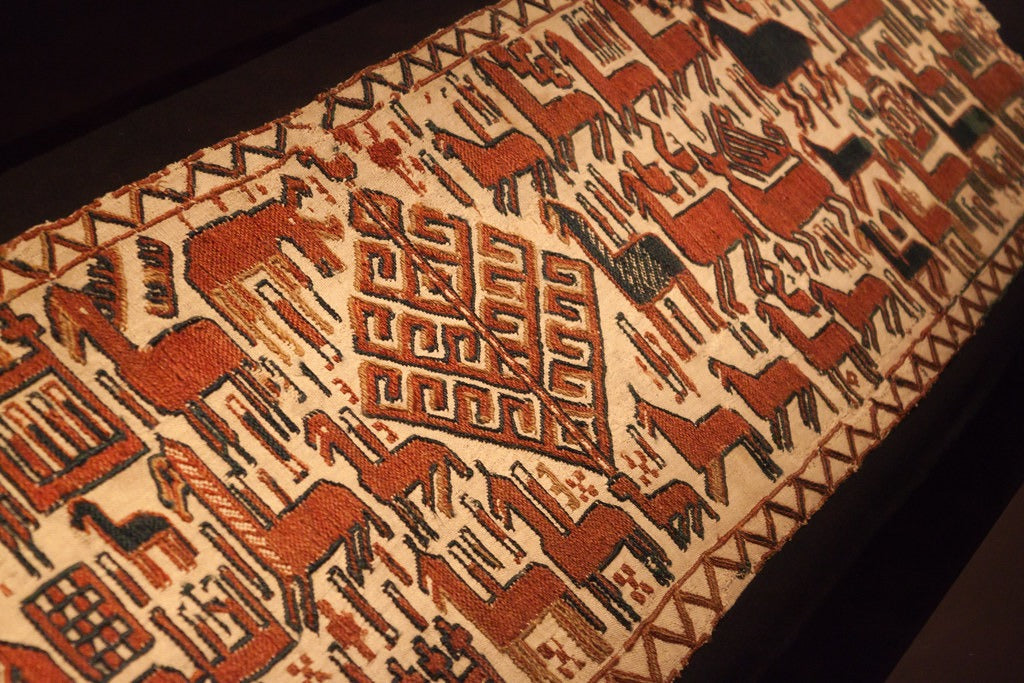
Valle Grave Sheds Light on Viking Age Iron Autocracy
In July 2023, a seemingly routine home extension project in Valle municipality, Setesdal, Southern Norway, turned into a remarkable archaeological discovery. As Oddbjørn Holum Heiland began excavating his garden, he unearthed what appeared to be a Viking grave. This unexpected find initiated a fascinating investigation into a burial that reveals much about Viking society and the rich history of the region.Unearthing an Unexpected Wealth of Artifacts
The Initial Discovery: A Glimpse into the Viking Age
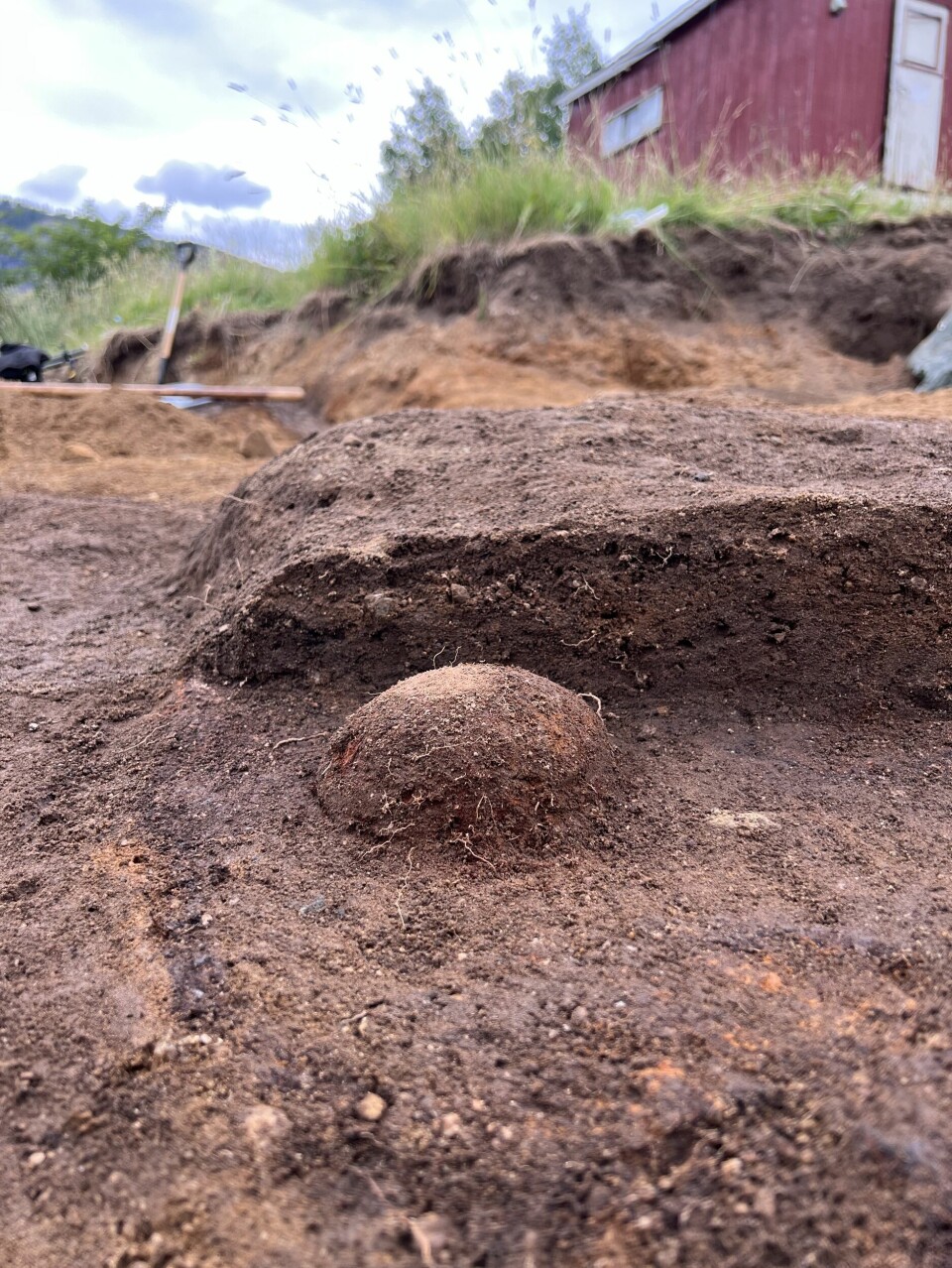
The shield boss discovered in the dig before being excavation (Photo: Emma Norbakk)
The story began when Oddbjørn stumbled upon a Viking sword, a lance, and fragments of brooches and gilded beads during construction. He promptly contacted the county municipality, leading to an emergency archaeological excavation led by experts from the Museum of Cultural History in Oslo. Initially, the archaeologists did not expect to find much more than a few beads and perhaps some bone remnants. However, as Jo-Simon Frøshaug Stokke, the excavation manager, observed, “Oddbjørn's excavator hadn’t even unearthed half of what was actually in this grave.”
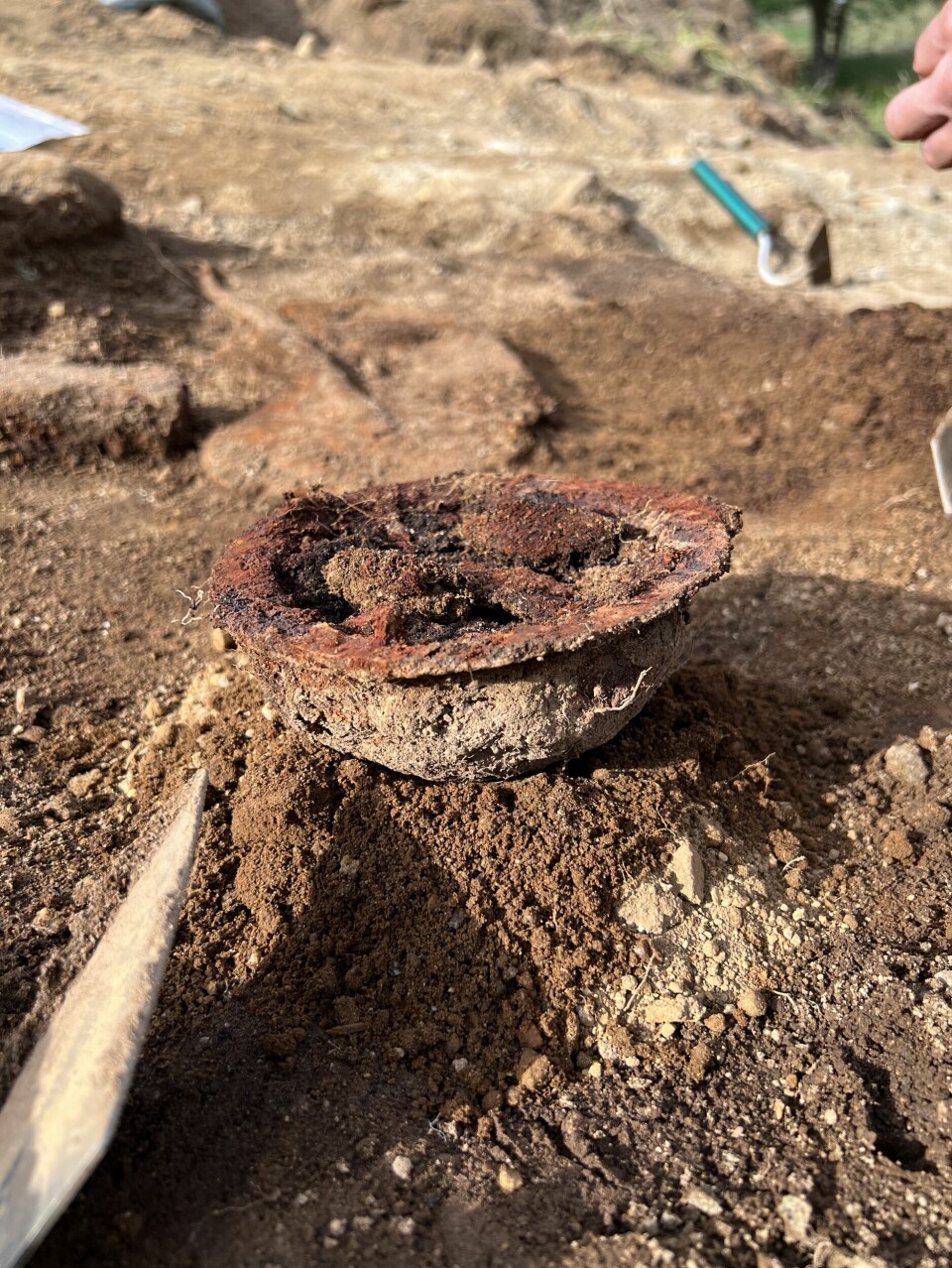
Shield boss after excavation (Photo: Emma Norbakk)
The two-day excavation unearthed an extensive array of artifacts that painted a vivid picture of the grave's occupants and their status. Among the findings were a complete set of warrior weapons, including a sword, lance, axe, and shield boss, alongside numerous jewelry pieces, such as four oval brooches and nearly a hundred beads of various styles.
Rich Burials and Their Implications
The sheer volume and variety of artifacts led the team to conclude that the grave was unusually rich. “This is perhaps the greatest find,” noted Stokke, reflecting on the discovery of the weapon set. The inclusion of multiple oval brooches, which were commonly used to fasten women's dresses during the Viking Age, raised questions about the identity of those buried. Although no human bones were found, evidence suggested the possibility of a double burial—perhaps a man and a woman buried together, or the grave being reopened later to add a spouse.
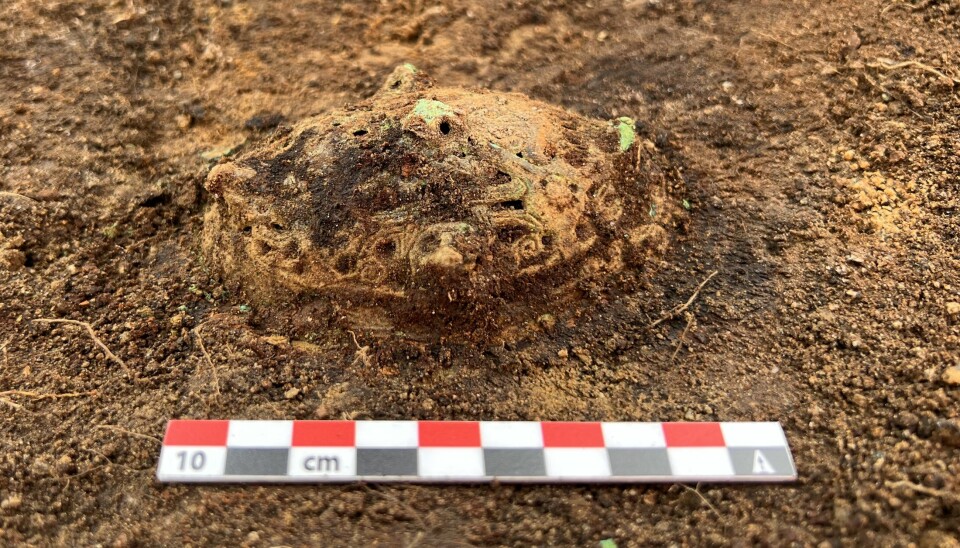
4 oval brooches in total were found in the grave. They are part of a common design that were mass produced with clay mouldings during the Viking Age (Photo: Emma Norbakk).
The grave goods were not limited to weapons and jewelry; the archaeologists also found objects indicating everyday life. Two spindle whorls used for making thread were uncovered, as well as a sickle, hinting at agricultural activities in the region. Valle has long been known for its barley cultivation, possibly dating back to the Viking Age. One of the more unusual finds was a "pet rock," described by Stokke as “a round stone that doesn’t have any other function than that it is smooth and nice to hold in your hand,” often found in graves across various contexts.
Connections to the Local Iron Industry and Aristocratic Traditions
The archaeologists noted striking similarities between this grave and other rich burials found nearby, including those at a neighboring farm a few hundred meters away. “You don’t have to move further than to the neighboring farm… They have the same type of sword, the same type of brooches, glass beads,” Stokke explained, suggesting a pattern of similar burial practices within the area.

Around a hundred beads of various styles were uncovered. Archaeologists and conservators aim to date the beads and identify their origins. (Photo: Emma Norbakk)
The discovery of multiple graves with comparable contents and the presence of some of Norway’s largest iron extraction sites further north in the valley prompted speculation about a local aristocracy. Stokke proposed the idea of an "iron aristocracy," where wealthy families, possibly involved in the iron trade, buried their dead with specific grave goods that signalled their social status. The finds, he remarked, “make it tempting to connect the iron extraction business to Valle.”
A Show for the Living: The Role of Viking Burials
The rich assortment of objects, ranging from weapons to everyday tools, suggests that the burial was not just about equipping the deceased for the afterlife but also served as a display for the living. “A burial of such an aristocracy during the Viking Age would have been a show for an audience,” said Stokke. He emphasized that funerals were public events where grave goods were displayed to affirm the social standing of the deceased and their family.
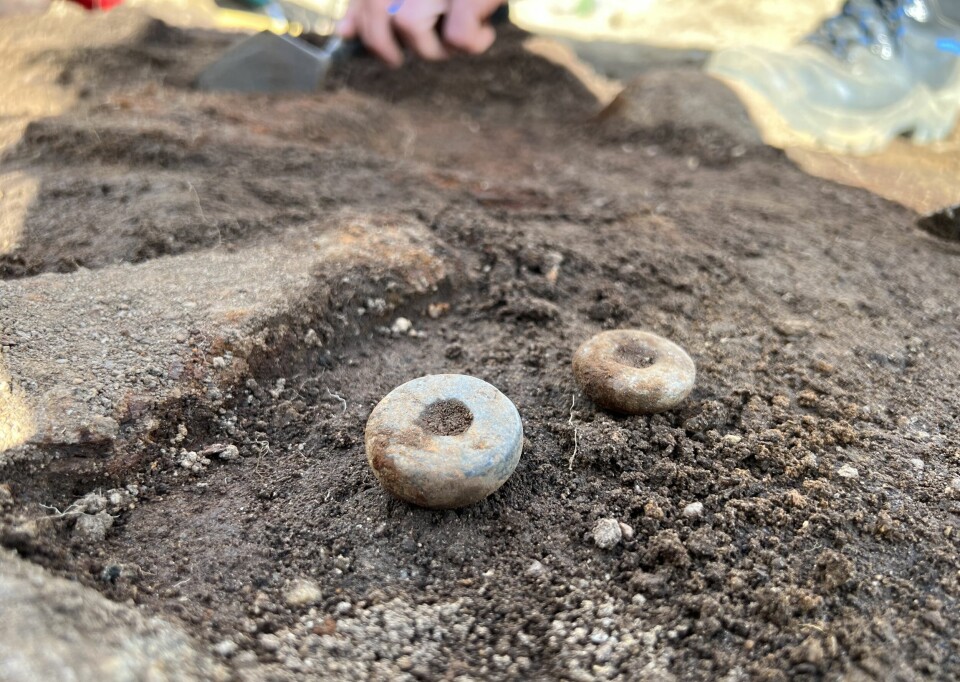
Spindle whorls for threading (Photo: Emma Norbakk)
The grave thus provides more than just artifacts; it offers insights into the societal structure of Viking Age Valle. The uniformity of items across multiple graves hints at shared customs and values within the community, reinforcing the notion of an aristocracy defined by distinct burial practices.
Expanding the Understanding of Viking Age Society
While the excavation has yielded many artifacts, the research now shifts to interpreting the broader patterns revealed by these finds. The similarities across graves in the region suggest a cohesive cultural and social framework, where burial customs transcended individual status and reflected a community's shared identity.
This discovery encourages a re-examination of Valle's role during the Viking Age, especially concerning the region's connection to the iron trade. The artifacts, combined with historical knowledge of local iron extraction and trade, point toward a society that was not only wealthy but also interconnected through commerce and cultural practices.
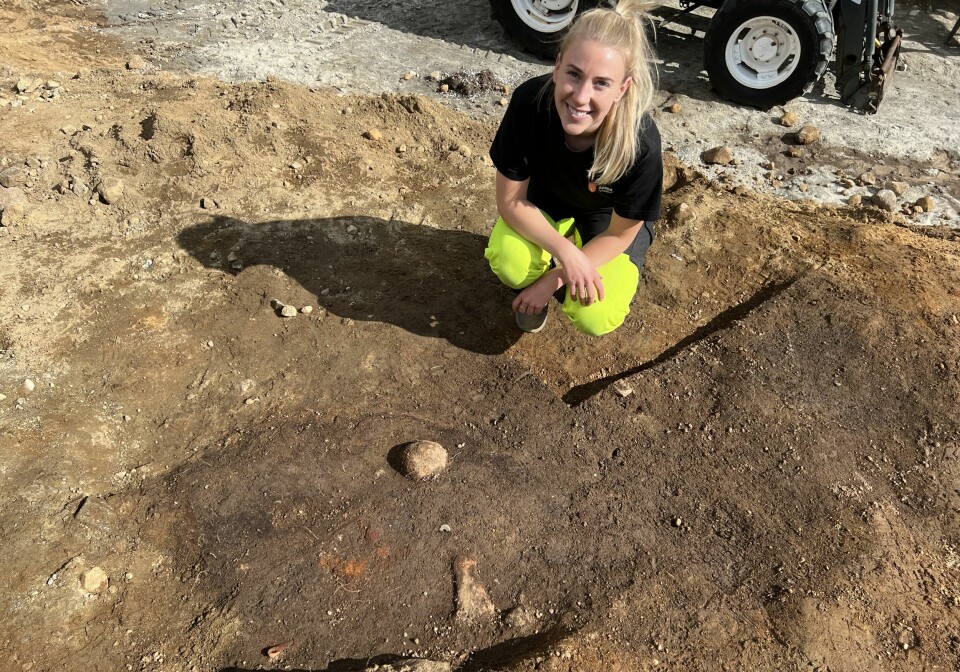
Archaeologist Emma Norbakk from Agder county municipality, who was called in last minute to assist excavation manager Jo-Simon Frøshaug Stokke from the Museum of Cultural History in Oslo, is shown here with the shield boss and axe visible just beneath it. (Photo: Jo-Simon Frøshaug Stokke)
Conclusion
The discovery of the grave in Valle offers a rare opportunity to explore the social dynamics of Viking society in Southern Norway. The grave’s contents reflect more than individual wealth; they suggest a structured society where status was displayed and maintained through material culture. The repetitive nature of the grave goods across multiple burial sites in the region implies a shared cultural identity and perhaps a local elite class who maintained their power through martial prowess and economic control of resources like iron.
This grave is not just an isolated historical curiosity—it is part of a larger narrative that informs our understanding of Viking Age societal organization, trade networks, and cultural practices. The artifacts recovered from the site will undoubtedly contribute to ongoing research, potentially reshaping how we perceive the role of local elites in shaping the cultural landscape of the Viking Age.
The unexpected find in Southern Norway offers a rare lens through which we can glimpse the customs, economy, and social hierarchy of Viking society. While much remains to be understood, each artifact serves as a testament to a vibrant past waiting to be unearthed.
References
Stokke, Jo-Simon Frøshaug. Interview excerpts and excavation details from the Museum of Cultural History in Oslo.
Norbakk, Emma. Archaeological notes and images provided by Agder County Municipality.
Bergstrøm, Ida Irene. "Here’s what the archaeologists found in the Viking grave the Heiland-family discovered in their garden." Science Norway, July 9, 2023. Link to article.

